Disclaimer: Ampace sent this product to us for free for a review. That does not affect our opinion about the product. In this article, we list both what we like and dislike. Read more about this here.
The Ampace Andes 600 Pro
Ampace is a relatively new company that make portable power stations and solar panels. They reached out and asked us to review one of its latest models, the Andes 600 Pro.
It’s a portable power station made not only for camping but for people that want to have a battery at home in case of power outages.
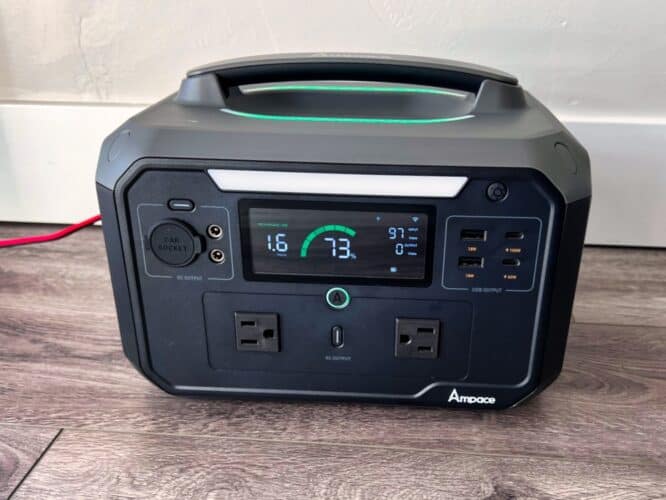
Use code 204F2GMK for 20% off ($359.2 instead of $449, valid until Feb 29th 2024)
What makes it great for both of those things are the fast charging, the EPS mode, the 1800W output boost, and the overall portability.
I have been testing the Andes 600 Pro for a couple of weeks, both at home and on a camping trip, and believe I have a good idea of what it’s capable of and not.
Specifications
Battery Capacity
The Andes 600 Pro has a battery capacity of 584Wh. It uses LiFePO4 hybrid batteries, advertised to last over 2000% full charging cycles before reaching 80% of its original capacity.
That’s a huge improvement over the more commonly used Li-Ion, that usually reach 80% of its original capacity after 500-1000 cycles.
You can make the battery last even longer by limiting the DoD (Depth of Discharge). That can be as easy as not discharging it below 20% before recharging it.
Inverter
The pure sine wave inverter powers the AC outlets and are rated at 600W output. There is a way to boost the output with what Ampace calls A-turbo. That increases the output to 1800W, and make it possible to power some of the more power hungry appliances.
The A-turbo boost mode does not work with every electronic, but according to Ampace it works with things like hairdryers, kettles, and similar heating devices.
I tested it with a 1500W heat gun, and it was able to power it for an extended period of time.
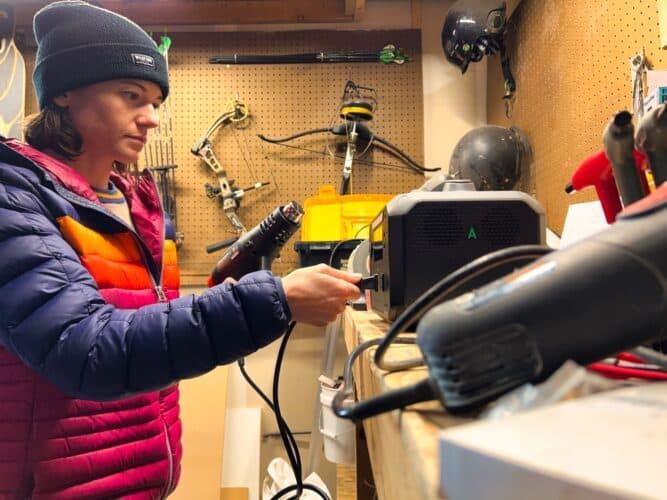
Ports
There are nine total output ports on the front of the Andes 600 Pro.
Two AC outlets, two USB A, two USB C, one 12V cigarette port, and two DC 5521 outputs.
As I mention above, the AC outlets are powered by the inverter which can output up to 600W (1800W with A-turbo).
The two USB A ports can output up to 18W. That’s fast enough to quickly charge most USB devices.
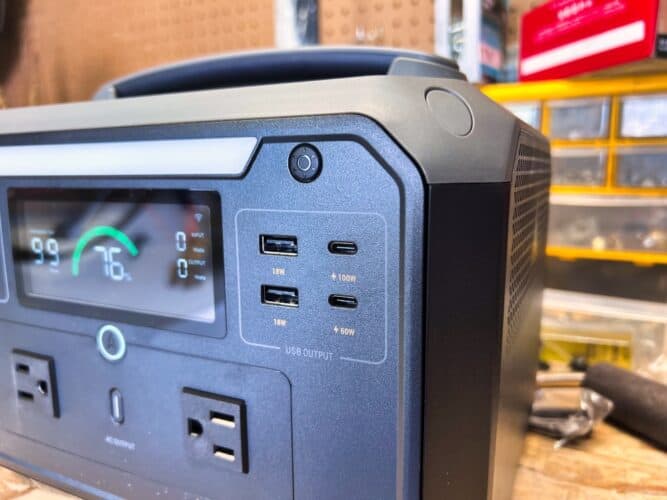
If your device uses USB C or you have a USB C charging port, you can use them instead. One of the USB C ports is rated at 100W, and the other 60W.
The regulated 12V cigarette port is able to power 12V fridges and similar devices that you usually plug into the 12V port in a car.
On the back, there are two input ports. One AC input, and one XT60 input for solar.
Display
The display on the front tells the battery percentage, input/output watts, active ports, warnings, WiFi status, and time to empty/full.
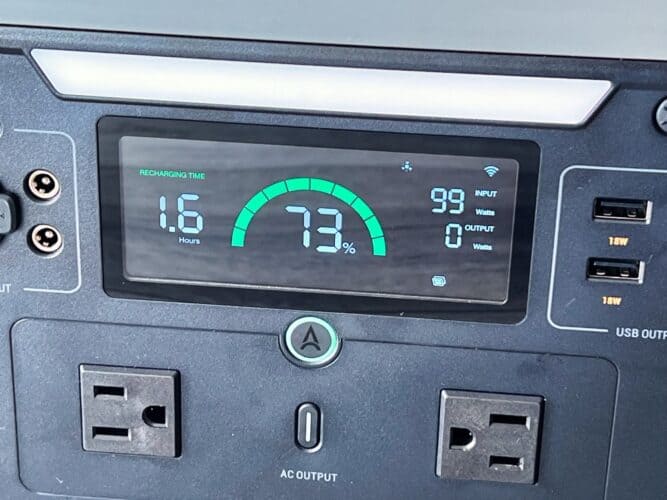
You can also control and monitor all of that in the phone app that is available for both Apple and Android devices.
Charging
The Andes 600 Pro can be recharged from 0 to 80% in one hour, and fully charged in 1,5 hours. That’s done with the included AC charger.
If you want to charge the battery using solar panels, your panels must have an open circuit voltage within the 11-30V range. That means it’s compatible with most 12V solar panels on the market, but not 24V panels.
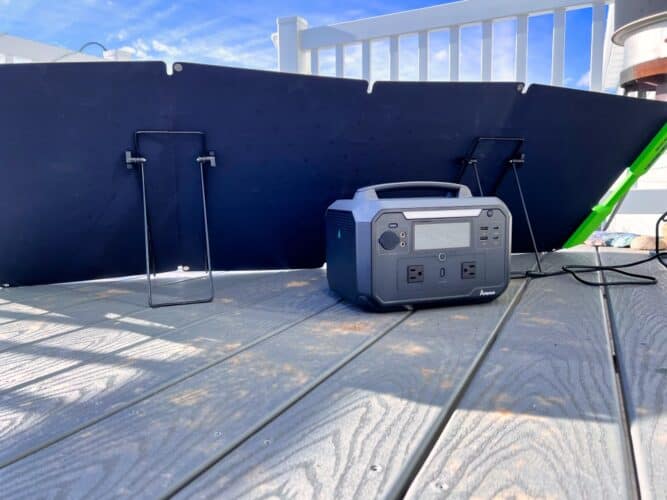
There is a 12A max input using solar, which means it maxes out at around 200W. Maximizing the input using solar would recharge the battery in 3-5 hours.
Reaching 200W input is likely going to require at least 250W of solar panels combined.
Due to the 11-30V range limit, you can only combine 12V panels in parallel, not series.
The included car charger can recharge the battery in five hours.
Other Features
It has Wi-Fi support, and a mobile app can be used to control and monitor the power station. It lets you connect the power station to an existing Wi-Fi network and control it remotely.
It’s also how you can change settings and make sure the firmware is up-to-date.
There is a rigid handle built-in on top of the power station which makes it easy to carry and transport the battery.
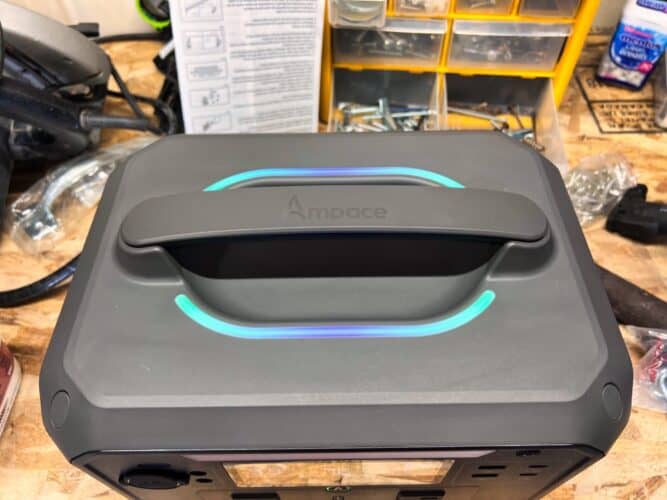
Last but not least there are a couple of lights. One flashlight on the front, and two LED bars on top. The flashlight is controlled by a button on the front, and the bars are status lights that can be controlled with the app.
The Andes 600 Pro has EPS support (Emergency Power Supply). The way it works is that if you plug devices into the AC outlets on the power station while charging the battery with the AC cable, your devices will actually be powered by the grid and not the battery.
Then, if a power outage happens, the power stations will quickly switch over to using battery power. Because it happens quickly (20ms), most devices won’t shut down and will stay powered. That’s why it’s useful for things like modems and routers.
Size & Weight
It weighs 16.8 pounds and measures 11.2 by 8.2 by 8.4 inches.
In The Box
Ampace includes a wall charger, car charger, and a cable bag.
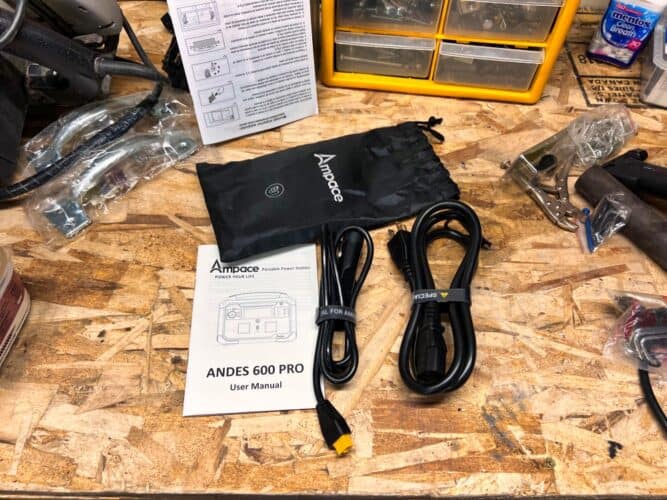
My Review
Like
The port layout
I especially like the way the AC outlets are spread out and how they are oriented.
Using both of them with big AC adapters at the same time is not a problem, and since they’re sideways nothing gets in the way.
Fast charging
Fast charging is quickly becoming the norm, but I do have to mention how great it is to be able to quickly recharge a power station. From empty to 80% in an hour is great.
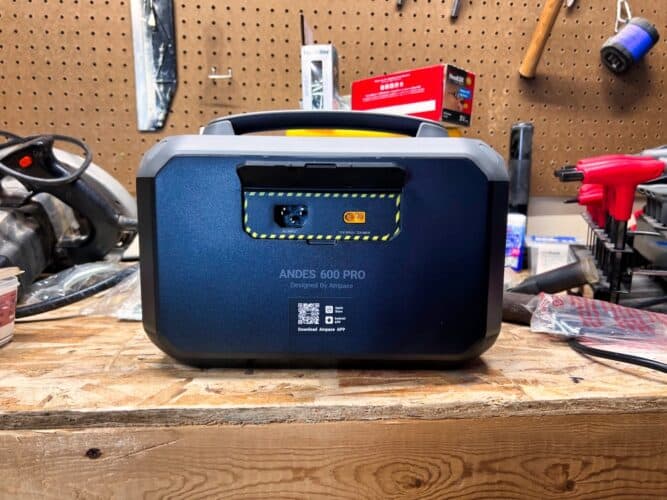
LiFePO4 hybrid batteries
They’re a bit heavier than Li-Ion batteries, but they are better in every other way. More safe, and more durable. They last longer, and it’s currently the best type of battery for power stations in my opinion.
100W USB C
I like that I can charge my laptop and phone quickly with the 100W USB C port. The only thing that would’ve made it better is if it could also charge the power station battery.
EPS
The EPS mode works great, and makes the power station usable not only for camping but for homeowners looking for something that will keep certain devices like a router or a modem going during a power outage.
Display
The display is great because it tells you everything you need to know. The battery percentage is also easy to see from afar.
Smartphone support
Ampace has done a great job on the mobile app. It’s very responsive and I didn’t have any issues connecting to the power station even after not using it for a while.
I also like that it connects to WiFi and doesn’t require you to use Bluetooth.
Don’t Like
No Qi wireless charging pad
One thing I wish it had is a wireless charging pad, since so many devices can charge wirelessly with Qi nowadays. Not a dealbreaker, but it would’ve been nice to have.
Conclusion
The Ampace Andes 600 Pro is a good reliable power station that stays relatively quiet even during high loads.
It performed well in my tests and the A-turbo boost actually worked better than I expected. Ampace was more reliable compared to the competitors I have tried.
I would like Ampace to include an MC4 to XT60 adapter so it’s possible to connect third-party solar panels right out of the box. I also think they should upgrade the solar charge controller to be compatible with 24V panels or two 12V panels wired in series.
Overall, it’s a good option and if you find it on a good deal I can comfortably recommend it.
Please leave a comment if you have questions.

